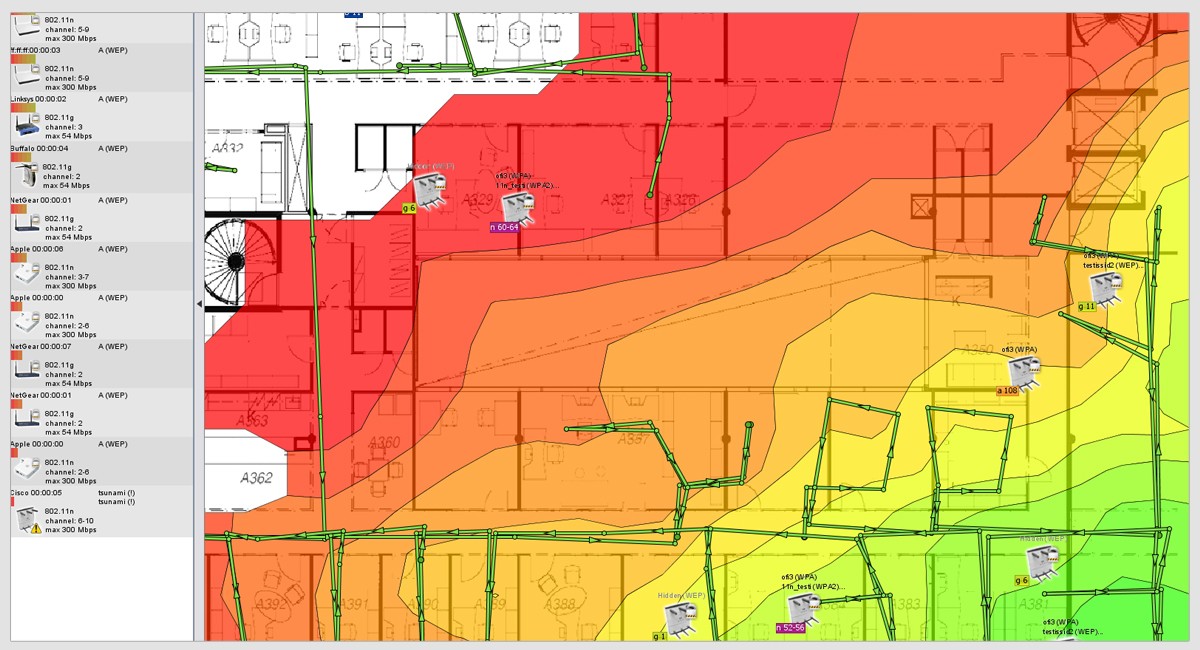5 ways to speed up your Wi-Fi

I know, we’ve experienced this more than we ought to – the sudden network slowdowns caused by an inconsistent Wi-Fi connection. There are plenty of reasons your Wi-Fi keeps bogging down (at the most inopportune times too, it seems) – signal congestion, physical location, firmware issues, hardware limitations or maybe your space is just too big for your router coverage.
Flashback to a few years back, most households could get by with a basic single-band router that kept a handful of devices connected to the home network. With the explosion of personal gadgets, however, it’s tough to find a home that doesn’t have multiple devices connected to it. Smartphones, gaming consoles, tablets and laptops now compete for the same bandwidth enveloping your space.
If you’re constantly losing your wireless signal, experiencing slow streaming video with constant buffering, or have to wait longer than usual for webpages to load, here are five ways you can try to help speed things up.
1. Update your router’s software
This should be your first order of business – checking for your router’s latest firmware.
Checking for updates is a critical step to your computer, gadgets and installed software and applications.
The reason for this is two-fold. First, you can take advantage of all the new features and improvements of the new version of the firmware. Second, your system is updated for security.
Usually, you will have the option to check, review, download, and install your router’s new firmware on its administration page. It depends on your router model, so check your user manual for detailed directions on how to do this.
Keep in mind, though, that router firmware updates require a restart so make sure you don’t have ongoing activities that require a network connection when you apply the update.
And lastly, for peace of mind, it is recommended that you check for router firmware updates at least once every three months.
Tip within a tip: Not sure how to access your router’s administrator settings? Click here for the easiest way to find your router’s password and IP address.
2. Look for interferences
Did you know that common appliances like cordless phones, Bluetooth speakers, microwave ovens and baby monitors can impact your Wi-Fi network’s speeds?
This is particularly true with older routers that can only operate on the 2.4GHz frequency and interference from other appliances can cause slowdowns and unpredictable connectivity.
Also, as much as possible, avoid placing your Wi-Fi router near 2.4GHz appliances like the ones I mentioned above.
To make your life easier, you can create an actual Wi-Fi “heat” map of your area using free tools like HeatMapper. Wi-fi mappers like this helps you see where Wi-Fi signals are strongest in your home or office.

3. Change channels
The next tweak you could do is select the channel of your router, especially if you’re on the 2.4GHz frequency.
As I mentioned earlier, the 2.4GHz frequency is particularly congested because, aside from other Wi-Fi routers in your vicinity, other appliances occupy this band. Moving from one channel to a less crowded one may help speed things up.
To check the optimum 2.4GHz channel for your area or the least used channel, try using a Wi-Fi scanner.
Macs
For Macs, Apple provides a free tool called “Wireless Diagnostics.” To get to it, hold the Option key while clicking on the Wi-Fi icon on the right-hand side of the menu bar, then choose “Open Wireless Diagnostics.”
To access the Scan tool, ignore the actual Wireless Diagnostics window then immediately go to the Window tab on the top left side of the menu bar then choose Scan.
This will open a list of all the Wi-Fi signals in your vicinity and the channel they occupy, among other useful information.
Windows
For Windows, try downloading the free Wi-Fi utility, Acrylic Wi-Fi Home. Similar to the Mac’s Scan tool, this application will instantly give you information about the Wi-Fi signals in your area including the channels they utilize.
For Android users, there are a bunch of Wi-Fi scanning tools available, but the most popular one is Network Analyzer. Click here for more details and download information.
Once you have the channel info you need, to prevent trampling on other channels, the recommended channels for 2.4GHz are 1, 6 and 11, since they don’t overlap with each other. Just choose the one among these that is least crowded then evaluate your improvements.
4. Put the kids on their own network and enable QoS
Aside from setting up parental settings to protect your kids from trouble on the web, you can put them on a separate network with its own set of rules and settings.
You can do this by setting up a completely different Wi-Fi router or by simply enabling your router’s “Guest Network” option, a popular feature for most routers.
Guest networks are meant for visitors to your home who might need a Wi-Fi internet connection but you don’t want them gaining access to the shared files and devices within your network. This segregation will also work for your smart appliances and it can shield your main devices from specific Internet-Of-Things attacks.
Another setting you can turn on to speed things up for specific tasks is QoS (Quality of Service).
QoS is a feature on routers that will let you prioritize traffic according to the type of data getting transmitted.
You could set latency sensitive applications like Skype, IP telephony, streaming media and online gaming to have higher priority over other types of activity.
Hypothetically, say you are currently downloading a file (non-latency sensitive activity) and you suddenly get a Skype video call (latency sensitive activity), your router will smartly direct bandwidth resources to the Skype call if needed, potentially slowing down your file download while you are on the call.
Different routers have different ways of handling QoS and most consumer level routers have more simplified ways of enabling it by having presets available. Just check your manual for information on what each one does.
Click here to learn why setting up a guest network can protect your home.
5. Buy a new 802.11 AC router
If you’re in the market for a new router and you want improved Wi-Fi speeds and reach across your home or office, then aim for at least an 802.11 AC router with dual or triple band capabilities.
Newer Wi-Fi standards mean better features. “AC” routers are a step up from the older “B” and “G” models and even “N” models. They have more features and offer better performance.
AC routers have a maximum spectral bandwidth of around 8 x 160 MHz, compared to the 4 x 40 MHz standard of N routers. In other words, the increased bandwidth allows more data to be transmitted without slowing down.
Additionally, by having multi bands, you could keep older 2.4GHz devices on their own bands while keeping newer devices that support the latest Wi-Fi standards on the higher bands. This is essentially like having multiple routers in one and it can solve the interference and congestion issues I mentioned earlier.
Newer AC routers also have advanced features not found in older routers. Look for specifications like beamforming, Multiple-In-Multiple-Out (MIMO), Multiple USB 3.0 connectors and Gigabit Ethernet ports.
Some top-of-the-line routers are even starting to roll out support for the newer AD protocol, also known as Wi-Gig.
Here are some of the best routers you can buy in 2017.
Bonus: Mesh is the word
If you have a large house or office space that require consistent network speeds, a mesh Wi-Fi network is worth investing on.
Unlike standard Wi-Fi routers that require extenders for added reach, next-generation mesh routers are designed to spread a Wi-Fi network’s coverage with the use of multiple access points or satellites.
These systems usually come in sets of two or three separate units that work together to envelop your home or office with Wi-Fi coverage.
As far as your gadgets are concerned, the Wi-Fi mesh is one big continuous Wi-Fi network.
For now, a mesh Wi-Fi network setup may be a more expensive system but for its reliability, seamlessness, expandability and easy management, it’s well worth the admission price.
Click here to learn more about mesh networks.
More from Komando.com:
This emergency feature on your smartphone could save your life
Secret: Hide what you buy on Amazon and have it delivered to a temporary address
Why it doesn’t always pay to book a hotel directly (and what to do instead)
